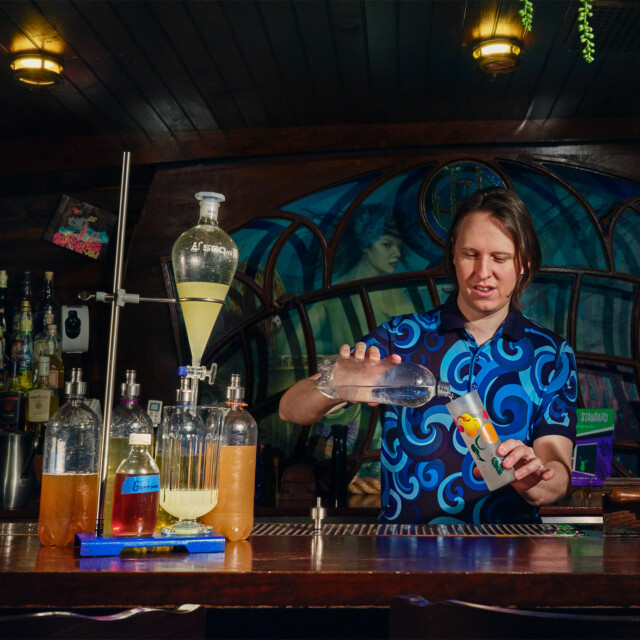Welcome to “Techniques!” a new monthly column that exists to showcase cutting-edge, process-driven cocktail creation, and so that I — someone who formerly worked in that field — can keep learning.
At Booker and Dax in 2013, my first day of work in the cocktail world saw me using a double beam scale to balance centrifuge rotors full of lime juice. By the time Booker and Dax closed in 2016, I was the head bartender, and I spent the next year at the NoMad learning to make a lot of very good drinks very quickly. Dave Arnold and Don Lee then opened Existing Conditions in 2018, and I will eternally be grateful that they saw fit to bring me on as head bartender. We did a lot of work that I am incredibly proud of before closing for good in 2020, for the same reason all sorts of bars closed at that time.
Now, alongside my immensely talented business partner Jena Derman, I make spirited confections known as Solid Wiggles, a modern, artistically driven alcoholic take on the classic Jell-O Shot. But that doesn’t mean I’ve lost my thirst for staying up to date with the goings-on behind bars. The thing I miss most from my time in the industry is the camaraderie among bartenders — the late-night shop talk about great drinks we’d tried, and new bars doing things in novel ways. Haley Traub, the inimitable general manager of Attaboy, calls this idea “Learning Horizontally.” Techniques! is my way of learning horizontally while taking you — the readers — along for the ride. Every month, we’ll chat with folks I respect a great deal, get deep into nitty-gritty specifics, and walk away with something new to try at home or behind the bar.
Garret Richard: Extracts and Essences
I first met Garret Richard as a guest at Slowly Shirley, the now shuttered subterranean West Village cocktail bar that showcased thoughtful cocktails and a well-curated rum selection. We chatted rum styles and tropical drinks and I was immediately a fan — he wore his love for, and knowledge of, drinks and spirits on his sleeve then as he does to this day. Garret and I later worked together at Existing Conditions, where his impeccable palate and deep well of classic cocktail knowledge made workshopping drinks for the menu a joy. These qualities — along with the recipe for his Beachcomber Negroni, my favorite drink of the entire lifespan of Existing Conditions — are clear for all to encounter in “Tropical Standard,” the book on classic and modern tropical cocktail technique that he released with co-author Ben Schaeffer in 2023.
Now the chief cocktail officer at Sunken Harbor Club, it would be understandable for Garret to take a beat and populate the bar’s menu with drinks from the book. Fortunately for all of us, that’s not his style. He’s instead back in the lab cooking up his next round of forward-thinking creations, and his latest project is examining the American tradition of the soda fountain and applying its two main techniques to cocktails: extracts and essences.
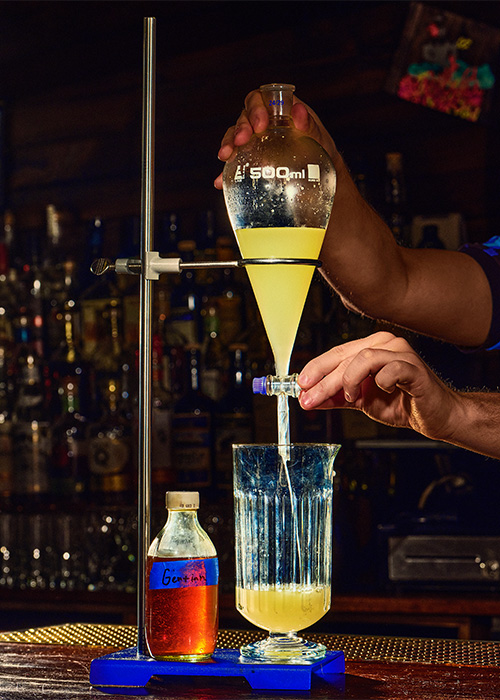
In practice, making extracts and essences are similar processes — they both involve adding an intense flavor to high-proof spirit, then adding a tiny portion of that flavorful elixir to syrup to make a cocktail ingredient. “Extracts are basically taking spices, grinding them, and then with a one-to-one ratio, macerating them with high-proof alcohol,” Garret explains, while the process making essences sees you “cut essential oils with high-proof alcohol, [which] makes it safe to consume.”
Bartenders tend to value simplicity and ease of execution when it comes to back-of-house production, so I asked Garret what the benefit was of using these techniques over making a traditional syrup. He used cinnamon as a case study to illustrate the point.
Traditional cinnamon syrup starts with a tea — a hot water extraction of cinnamon sticks or ground cinnamon that’s then strained and bolstered with sugar. The drawback of this method is that the solution includes a lot of the woodiness of the actual plant matter and a relatively one-dimensional cinnamon flavor.
A cinnamon essence, on the other hand, is “very intense” because there’s no plant matter to get in the way, Garret says. It’s “pure oil that is getting pressed out of Ceylon or Cassia” that is then added to a high-proof spirit, and finally added to simple syrup.
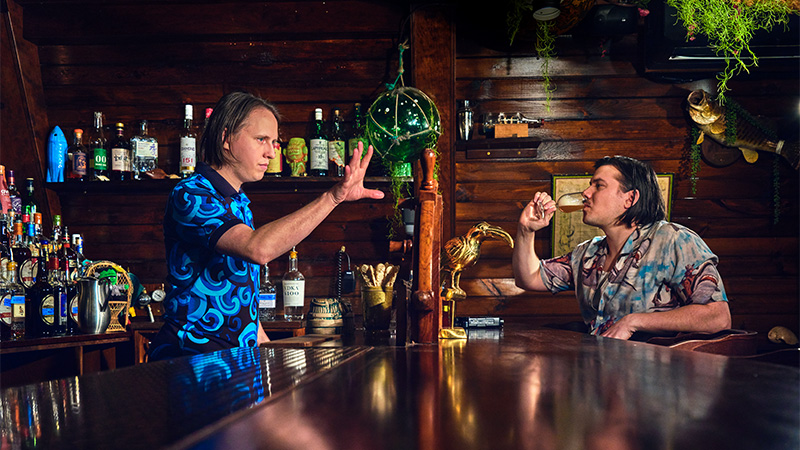
Creating a cinnamon extract is likewise as simple as adding ground cinnamon to a high-proof neutral spirit in equal parts, and allowing the mixture to macerate for 24 to 48 hours. To begin, add a small amount of the spirit to the cinnamon — enough to wet all the grounds, like starting a pour-over drip coffee — and allow it to bloom for half an hour. Then add the rest of the spirit and let it sit for a day or two. Garret makes his in a separatory funnel for easy extraction but assures me that it would be fine to replicate at home by straining the completed infusion through mesh or a paper filter. This extract can then be added to simple syrup and used in a cocktail. He describes the extract as “more concentrated up front” and “cleaner” on the back end of the palate.
If a traditional cinnamon syrup is a still life, the extract and essence forms are technicolor dreamscapes — a cartoonish blast of cinnamon flavor.
Unlike his tropical drink predecessors Donn Beach and Vic Bergeron, who kept their ingredients and specs under lock and key, Garret is transparent about his sources of inspiration and methodologies. For both of today’s topics, Garret took guidance from Darcy O’Neil, a Canadian chemist turned author and drinks YouTuber. Oneil’s book “Fix the Pumps” and his “Art of Drink” YouTube channel gave Garret the ratios to safely dilute essential oils to non-toxic levels in drinks and informed him on the correct ratios to make extracts.
At this point, a disclaimer: I cannot recommend you try making essences at home because even food-safe essential oils can be toxic or deadly if consumed in too high a concentration — so leave it to the pros or do some extensive additional research.
Oneil’s work primarily focuses on soda syrups and soda fountain recipes — techniques that have slipped through the cracks for most bartenders, who think the intersection of science and cocktails starts and ends at “Liquid Intelligence.” “[Darcy’s work] has proven people have been doing [scientific] drinks for a long time — like 100 years — and some of it is still extremely progressive,” Garret says. “Bars are just figuring this out now.”
So how does all this work shine in a cocktail? Garret gave me a chance to preview a new cocktail hitting the menu at Sunken Harbor Club: the Port Mahon. Born from his love of bitter lemon soda and as a way to use up spent oranges that had been used for garnishes, the drink is constructed around a soda-style syrup. Garret clarifies fresh orange juice, adjusts it with sugar to 50 Brix so it’s the same sweetness as simple syrup, then adds orange essence and gentian extract. The syrup is finished with an astronomically small quantity of quinine sulfate (another don’t-try-this-at-home ingredient) and a touch of citric acid before it’s combined with Mahon Gin and water, then chilled and force-carbonated three times at 45 PSI. It’s served in an elegant vintage highball glass and frankly, is the pinnacle of refreshment — a violently effervescent, almost perfectly clear drink that coyly hides hours of effort and years of research.
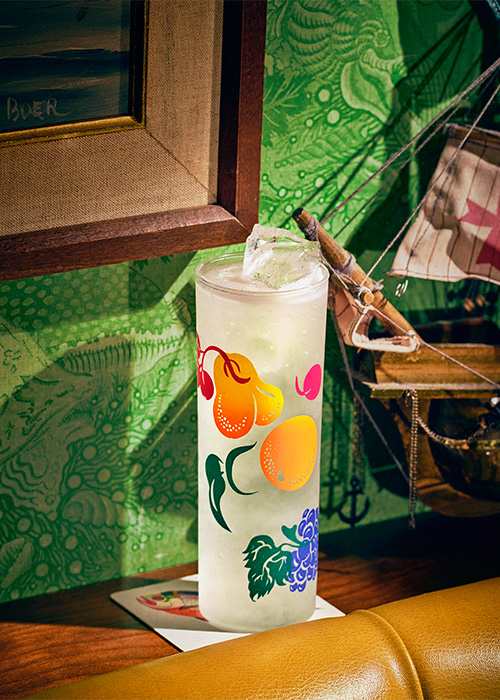
As mentioned in the disclaimer above, it’s healthy to leave home production of essences to the professionals, but I was inspired by Garret to get to work on an extract, and my results were so lovely that I absolutely recommend giving this a try at home.
In a past life I might have sped this process up with rapid infusion under nitrogen dioxide pressure, acidulated the syrup, and doped it with glycerine for body before force-carbonating a finished drink. But my goal is accessibility, so in this instance I made a soda that truly anyone can make without any fancy equipment. I’ve had success in the past with hibiscus infusions and love its tart complexity, so dried hibiscus was my starting point. I pulverized it in a blender, infused it into grain neutral spirit (151 or Everclear will also work here), added that infusion to simple syrup, and topped it with soda and a squeeze of lemon. Wildly refreshing on its own and excellent bolstered with tequila, I hope you’ll give it a try at home and use this format for further extract production.
Enjoy!
Hibiscus Extract Recipe
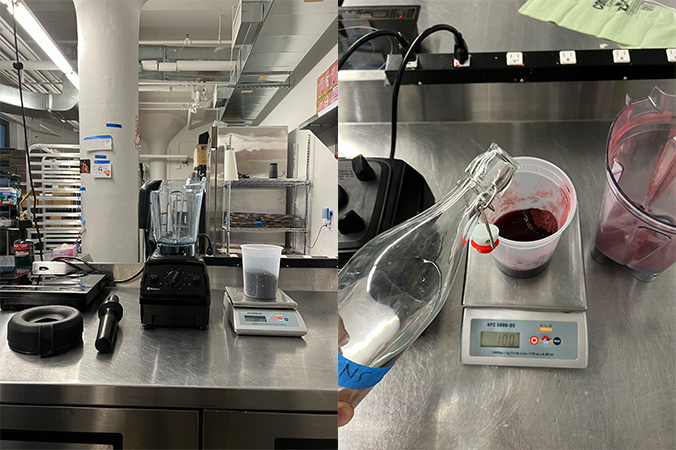
Ingredients
- 100 grams dried hibiscus, pulverized into dust in a blender
- 100 grams high-proof neutral spirit, such asGNS, Everclear, or 151
Directions
- In a nonreactive container, add a small amount of the spirit to the powdered hibiscus, just enough to wet all the powder.
- Allow to bloom for 30 minutes.
- Add the rest of the spirit. Let sit for 24 hours. Strain through a paper coffee filter.
- Bottle and store in a cool, dry place.
Hibiscus Syrup Recipe
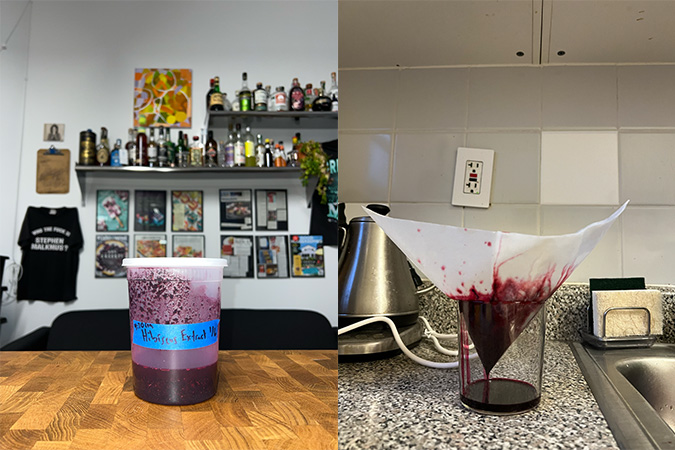
Ingredients
- 500 milliliters simple syrup
- 15 milliliters (3 teaspoons) hibiscus extract
Directions
- Stir ingredients together until incorporated.
Hibiscus Soda Recipe
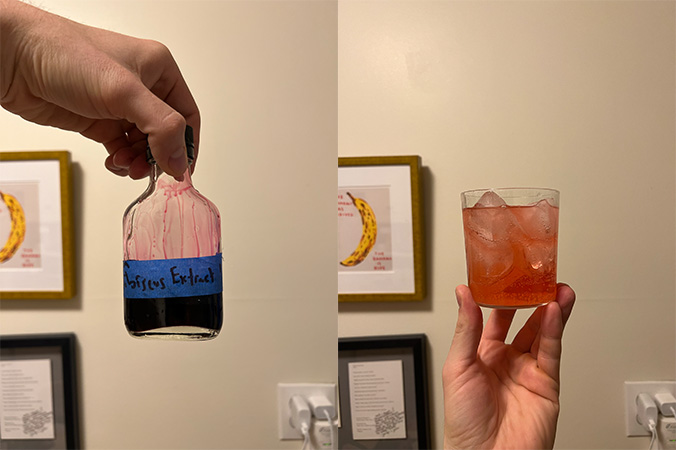
Ingredients
- 5 ounces club soda
- 1 ounce hibiscus syrup
- ½ ounce fresh lemon juice
- Optional: 1½ ounces Highland blanco tequila, such as Siete Leguas
Directions
- Add all ingredients to an ice-filled highball glass. Briefly stir to combine.
- Enjoy!
This story is a part of VP Pro, our free platform and newsletter for drinks industry professionals, covering wine, beer, liquor, and beyond. Sign up for VP Pro now!
